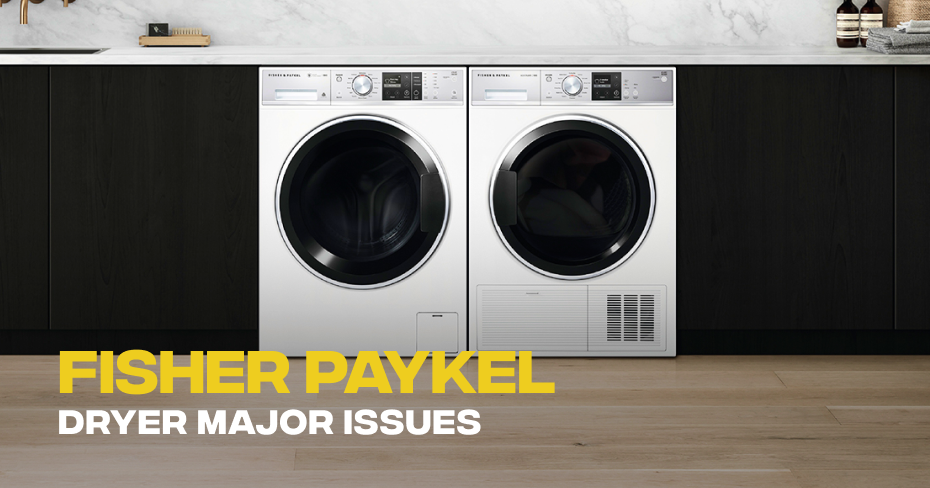
Fisher Paykel Dryer Unusual Noises During Operation
Though it may seem difficult to repair your appliance at home, it is easy once you have figured out what part is causing the problem. We have curated this list of parts that you should be looking at when diagnosing a dryer repair problem.
Check the Drum Glide or Slides
When figuring out what’s wrong with your gas or electric dryer, it will be best to test the drum glides. Remove the clothes dryer’s cabinet to examine the drum glides. Drum glides support the front of the drum. Nylon, Teflon or plastic are the usual material used for creating the drum glides. Over time, these glides wear out and may cause a scraping noise because the drum is unable to rotate on a smooth surface. Make sure to replace the glides to eliminate this problem.
- Look for the Drum Support Rollers and Shaft – Checking the set of drum rollers will also be necessary if you found that there is nothing wrong with the glides or the drum bearing. The rollers placed on the rear bulkhead or the front bulkhead. Worn out rollers will cause the drum not to rotate freely and create noise when the laundry dryer is on. Keep in mind that you also need to check the shaft of the rollers to see if it also needs replacement.
- Examine the Drum Bearings – The defective drum bearings sometimes cause the squeaking noises from your gas dryer in some occasion. Some household dryers use a bearing to support the drum. This bearing is usually at the rear of the drum of the dryer. If the bearing at the rear of the drum is already defective, you’ll need to replace quickly it solve the squeaking noise.
- Idler Pulley – The idler pulley functions as the tension provider to the belt. When checking for the idler pulley on your residential dryer, the removal of the lower access panel or the front panel is needed since it is usually next to the drive motor. High-speed rotation and increased applied friction may cause the idler pulley to fail over time. When the idler pulley is not functioning well, you’ll usually hear a squeaking noise or a loud scraping sound if not replaced immediately.
- Felt Drum Seals – The drum seals are features to prevent excess air from going into the drum. The seals also act as the cushion between the dryer drum and the bulkheads. When the felt like material of the seal is already torn the clothes can become stuck in the gap while the drum is turning. Loud thumping or scraping noise and irreparable damages to your clothes are what you will be looking forward to when you don’t replace these drum seals immediately.
- Brittle Drive Belt – The driver belt is what causes the dryer’s drum to rotate. The driver belt may turn rigid and brittle, and some sections of the belt can even detach over time. A fragile belt may cause that thumping noise you hear when you are using your dryer in your house. When the belt is already showing some cracks and signs of flimsiness replacing it immediately is necessary.
- Baffle or Lifter – The baffles or lifters are used to tumble the clothes in your dryer machine. These are located on the inner surface of the drum. Baffles and lifters eventually become loose over time and may cause that thumping noise. Checking for any loose change or metal objects before loading your laundry is also important because these objects may become lodged under the baffles. Repairing or replacing damaged baffles will be necessary because it will cause harm to your clothing.
- Blower Wheel & Housing – This functions as the ventilation support for electric and gas dryers. The blower wheel draws the air from the heating chamber to the exhaust vent. If the blower wheel is loose a loud roaring noise is usually heard. You can check the housing to see if there are any objects that may hit the wheel. If none, inspect the hub of the wheel to see if it is securely attached to the shaft of the motor. Replacing the blower wheel will be your best option if you see that it is already worn out.
- Motor – Keep in mind that a broken motor can produce a variety of sounds similar to the humming noise and squeaking sounds mentioned above. To make sure that it is the engine that needs attention, you need to remove the belt and the blower wheel to check if the motor is the source of the noise.
